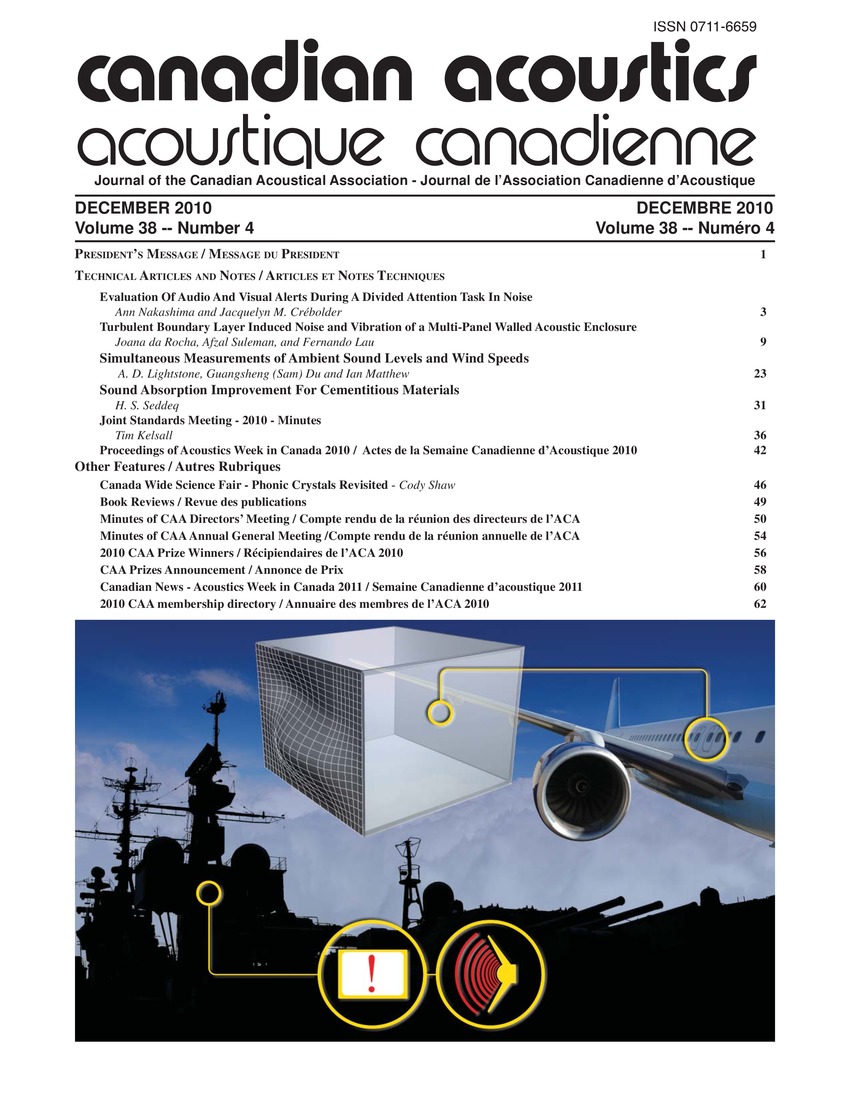Sound absorption improvement for cementitious materials
Keywords:
Acoustic wave absorption, Acoustics, Architectural acoustics, Cements, Constraint theory, Cotton fibers, Materials, Mineral wool, Mortar, Sound insulating materials, Acoustic engineering, Cement binder, Cement mortars, Cementitious materials, Fibrous cement, Fibrous material, In-buildings, Industrial noise, Interior surfaces, Noise levels, Potential benefits, Room acoustics, Sound absorption, Sound reflection, Sound-absorptive materials, Undesirable effectsAbstract
Acoustical material plays a number of roles that are important in acoustic engineering such as the control of room acoustics, industrial noise control and studio acoustics. Sound absorptive materials are generally used to counteract the undesirable effects of sound reflection by hard, rigid and interior surfaces and thus help to reduce the reverberant noise levels. Cementitious materials may be used as interior finishing for interior surfaces in buildings. This paper review of sound absorption studies for cementitious materials for their potential benefits in sound absorption and investigate some finishing cementitious materials added with porous and fibrous materials to improve the sound absorption performance. Sprayed cement mortar containing cotton fibers and perlite of an amount of perlite in the region of 80% in relation to the cotton fibers gave the best results. Also sprayed fibrous cement mortar based on mixture of mineral wool and cement binders achieved high sound absorption.Additional Files
Published
How to Cite
Issue
Section
License
Author Licensing Addendum
This Licensing Addendum ("Addendum") is entered into between the undersigned Author(s) and Canadian Acoustics journal published by the Canadian Acoustical Association (hereinafter referred to as the "Publisher"). The Author(s) and the Publisher agree as follows:
-
Retained Rights: The Author(s) retain(s) the following rights:
- The right to reproduce, distribute, and publicly display the Work on the Author's personal website or the website of the Author's institution.
- The right to use the Work in the Author's teaching activities and presentations.
- The right to include the Work in a compilation for the Author's personal use, not for sale.
-
Grant of License: The Author(s) grant(s) to the Publisher a worldwide exclusive license to publish, reproduce, distribute, and display the Work in Canadian Acoustics and any other formats and media deemed appropriate by the Publisher.
-
Attribution: The Publisher agrees to include proper attribution to the Author(s) in all publications and reproductions of the Work.
-
No Conflict: This Addendum is intended to be in harmony with, and not in conflict with, the terms and conditions of the original agreement entered into between the Author(s) and the Publisher.
-
Copyright Clause: Copyright on articles is held by the Author(s). The corresponding Author has the right to grant on behalf of all Authors and does grant on behalf of all Authors, a worldwide exclusive license to the Publisher and its licensees in perpetuity, in all forms, formats, and media (whether known now or created in the future), including but not limited to the rights to publish, reproduce, distribute, display, store, translate, create adaptations, reprints, include within collections, and create summaries, extracts, and/or abstracts of the Contribution.


